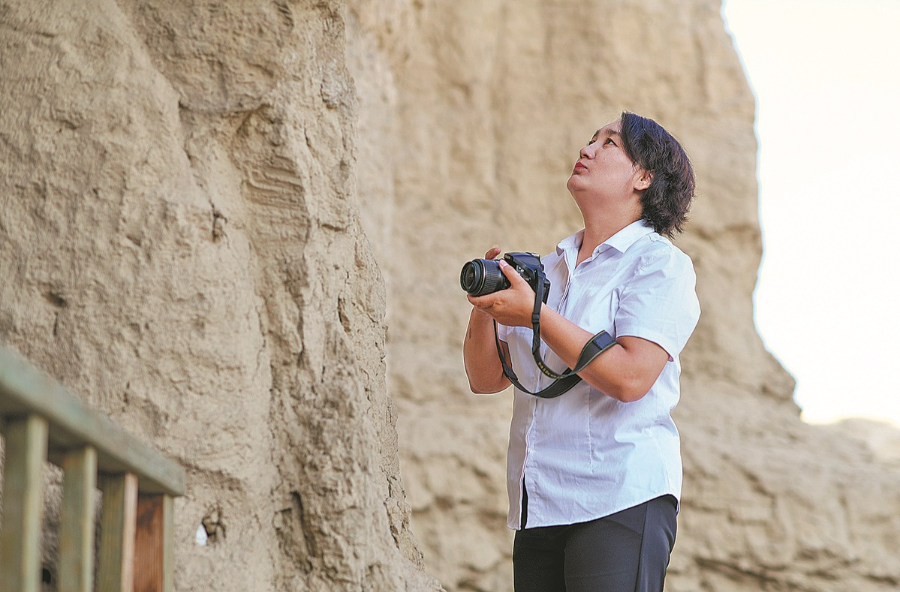
With her camera, Gulbakre Maimin records the status of Jiaohe ancient city in Turpan, Xinjiang Uygur autonomous region, in June. WANG FEI/XINHUA
URUMQI — During her childhood, Gulbakre Maimin would often play hide-and-seek with her friends in the ancient city of Jiaohe. As she grew older, she followed in the footsteps of her father and her grandfather by becoming a preservationist at the World Cultural Heritage Site.
"My family has engaged in the preservation of the ancient city for around half a century, dating back to 1972. Both my father and grandfather were preservationists of cultural relics," Gulbakre said.
Nestled in the city of Turpan, Northwest China's Xinjiang Uygur autonomous region, the Jiaohe Ruins are the best-preserved, longest-lasting and largest relics of a clay-built city in the world.
The ancient city of Jiaohe served as a major traffic artery along the Silk Road, witnessing the over 5,000-year history of the Chinese civilization.
"I really enjoy taking a stroll around the ancient city, walking through its alleys and imagining its past glory. Sometimes, I feel as if I can sense the ancient people walking out from the houses, inviting me in for a cup of tea," the 40-year-old said.
During her undergraduate and graduate studies, Gulbakre majored in history and cultural heritage conservation.
Over the past decade, Gulbakre has been dedicated to her work, which consists of daily patrols, inspections and maintenance within the ancient city. She also takes part in cultural activities for tourists and ensures the safety of visitors during their tours.
"I am familiar with every corner of the ancient city. I even know the exact location of each small wooden peg embedded in the earthen wall during the maintenance and reinforcement work," she said.
"My job may seem insignificant to others, but to me it is quite meaningful, since protecting our civilization is the responsibility of each of us," Gulbakre added.
One of Gulbakre's proudest moments was her involvement in the application for UNESCO World Heritage status for the Jiaohe Ruins. During the preparations, she recorded and archived every day and took part in numerous publicity activities.
She always remembers the day of June 22, 2014, when UNESCO designated a 5,000-kilometer stretch of the Silk Road network from Central China to the Zhetysu region of Central Asia as a World Heritage Site, and Jiaohe city, once a crucial stop along the Silk Road, was part of it.
"If my grandfather were still alive, he would be extremely happy and proud as well," she said.
Protection efforts for the ancient city continue. More than 120 million yuan ($16.5 million) has been put aside for the preservation of the ancient city in recent years.
Another reinforcement project will be launched in 2024.
There are 13 cultural relics protectors in Jiaohe, including Gulbakre, who play an indispensable role in preserving the ancient city.









